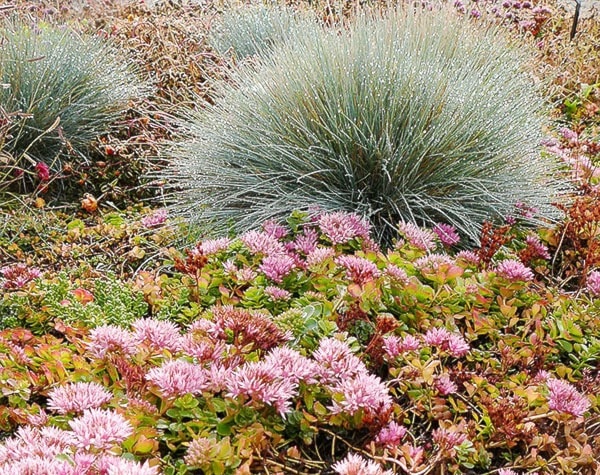This summer most areas of the province were under watering restrictions.
Many experienced stage four (a complete ban on any outdoor water use).
Restrictions are likely to be the norm from now on.
In the past six weeks I have presented full length xeriscape workshops in Armstrong, Kamloops and Nanaimo as well as two local sessions of my class ‘Introduction to the Principles of Xeriscape.’
Many attending were avid gardeners who realize the need to make changes to their traditional landscapes.
Initially this looks daunting. However change can be made in incremental steps.
Here are some suggestions to get started:
1) Mulch everywhere:
If you do nothing else, spreading a layer of organic matter such as your own compost, well-rotted manure or commercial products such as Glenmore Grow or Classic Compost over all bare ground will make a big difference.
This can be done in early spring after a thorough weeding and when the ground is moist.
Mulch helps retain moisture in the soil, greatly reduces weed growth, and feeds the plants in a natural way as soil micro-organisms break down the organic matter.
Spreading a one-inch layer over lawn has the same effect.
2) Assess your plant’s water needs.
Note the ones that managed well in the dry heat and those that needed more water.
Plan to reorganize plants to group water-thirsty plants together, separate from ones that are drought- tolerant.
This can be done by creating a new garden bed or even a nursery bed. A nursery bed is something temporary where plants are placed to grow until a more permanent location can be made for them. It doesn’t have any design so there is no pressure to have it ‘look good’.
Plants that got crispy leaves may need more shade. As trees grow bigger, sun-loving plants may end up in too much shade.
If a plant needs different conditions to thrive, relocate it. If that’s not possible, consider giving it someone who has the right conditions.
3) Assess unhealthy plants.
Often water-wise plants can fail to thrive or grow too big and floppy due to overwatering or too much fertilizer.
Check to see if either of these might be causing problems with your plants.
Common examples are blue fescue grass, Artemesia ‘Silver Mound’ and Sedum ‘Autumn Joy.’
Alternately, some plants are just not suited to this climate.
Plants that attract pests and diseases or fail to thrive take a lot more time and effort and never look their best.
Consider replacing them with more resilient plants suited to the conditions.
Check the plant database at www.okanaganxeriscape.org” www.okanaganxeriscape.org for ideas.
Make notes now for steps two and three, while your memory is fresh.
•••
Brian Minter will be presenting ‘The Changing World of Gardens’ at the Okanagan College Theatre on Nov. 14, 1 to 2:30 p.m. Tickets: $5 at the door. Free Parking.
Minter’s presentation is sponsored by the Okanagan Master Gardeners (okanaganmg@gmail.com).
